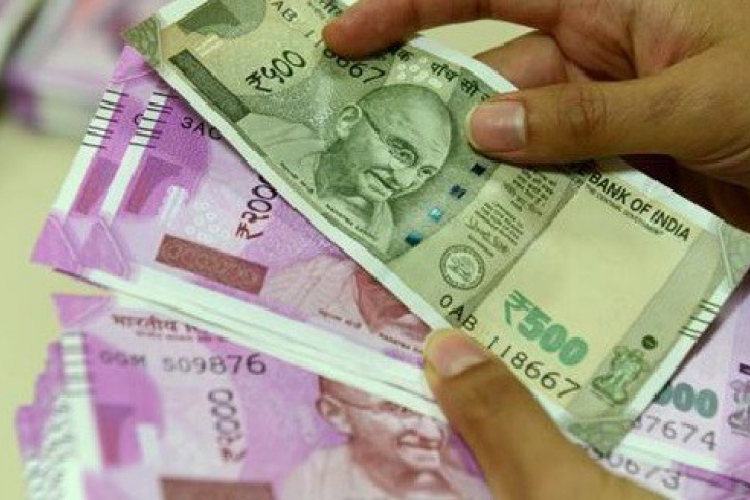WEAKENING OF RUPEE
IN NEWS
The rupee weakened for the fifth consecutive session as it breached the 71.50 per dollar mark on concerns over worsening macroeconomic parameters amid rising in oil prices.
The rupee closed at 71.58 a dollar, which was a record closing low.
Why has the rupee been falling?
There are three major reasons.
- The rise in crude prices, portfolio outflows from India due to the selling of stocks, especially by foreign portfolio investors (FPIs), and a growing anticipation of interest rates rising in the US.
- Brent crude prices have increased from $70.30 to over $80 per barrel since the beginning of the new financial year in April. This is mainly due to concerns over supply disruptions after the rise in US tensions with Iran, which contributes 11-12% of OPEC production. As oil prices rise, India’s trade deficit — excess of imports over exports — will worsen, which can in turn impact the current account deficit.
- Expecting US interest rates to go up, FPIs have taken out Rs 27,000 crore from India in April and May so far, which is over $4 billion in less than two months. As the US Federal Reserve raises rates further — which is bound to happen — FPIs will prefer to invest in their home country as the arbitrage gain while investing in India and emerging markets will decline. A weakening rupee will also lower returns, which will in turn impact future inflows.
What does this mean for imports?
Importers will be hit as the cost of getting goods or equipment into India will increase. When the rupee weakens, importers, especially oil companies and other import-intensive companies, have to shell out more rupees to buy an equivalent amount of dollars. In this sense, a weak rupee can act as a kind of import tax. For the oil sector, it is a double whammy, as the rise in crude prices and the decline in rupee value add to retail fuel prices. Margins of oil companies will come under pressure.
And what about exports?
Exporters, especially software exporters, stand to benefit, as they get more rupees while converting dollar export earnings into Indian currency. This is expected to boost exports, which have been showing single-digit growth. The twin impact of FII outflows and worsening trade balance can hit the rupee further; to keep external metrics stable, therefore, exports of both services and merchandise need a further push.
What does a weak rupee do to the economy?
The depreciation of the rupee has the potential to increase domestic inflation through the import route. An already rising crude oil prices will escalate even more once the exchange rate is considered. Oil marketing companies will most likely pass the cost to consumers through fuel price hikes. As fuel permeates almost all sectors of the economy, retail inflation is likely to rise on a broad basis. A sharp rise in inflation will be detrimental to growth, especially when investment is just reviving.
What are the implications of the rupee’s sharp depreciation on industry?
The currency’s weakness makes imports costlier. India is the third-largest importer of oil and given that fuel permeates every sector of the economy, the escalation in its cost will have wider implications. Oil importers will take a hit on margins or pass on the cost to consumers.
Importers of capital goods will see shrinkage in margins as well. An already weak gems and jewelry sector will be hit harder. On the other hand, sectors such as Information technology, textiles and others that export goods will benefit in a big way.
Why is a weaker rupee a disadvantage under current circumstances?
A weaker rupee helps exporters, but exports have been dwindling for several quarters now besides facing intense competition from China, Taiwan, Vietnam, etc. That said India is a net importer not just of crude, gold and electronics, but also of essential commodities like edible oils and pulses. Two years of consistent drought have dragged down production and yields of oils and pulses causing the latter to surge to `150 -160 at the retail level. We are hugely dependent on imports to narrow the shortfall. All this causes the current account deficit to swell and puts further pressure on the local unit. This also preempts the central bank from cutting interest rates and hampers economic growth. A weak rupee reduces the dollar gains of foreign portfolio investments.
What is the solution for a weak rupee?
The premise that a weakening rupee is needed to increase the competitiveness of domestic industry is valid since exports tend to benefit from a falling exchange rate. However, a sudden fall in the currency may shake faith in the economy and therefore the RBI is known to intervene in the forex market to slow the fall. The short-term solution is this intervention by the central bank. Over a longer period, reducing dependence on imports and attracting consistent foreign direct investment through friendly policies may make the currency less vulnerable to external shocks.


 "UPSC-2026-PRELIMS COMBINED MAINS PROGRAMME" NEW BATCH STARTS WITH ORIENTATION ON JULY 7th,2025
"UPSC-2026-PRELIMS COMBINED MAINS PROGRAMME" NEW BATCH STARTS WITH ORIENTATION ON JULY 7th,2025 